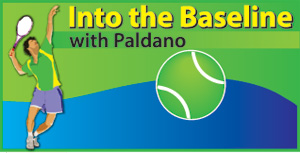Panama Hats, Elegant play and Tactics
The venue of the 2nd Grand Slam of the year is the Roland Garros Stadium in Paris. Only 4 countries won the Davis-Cup in early 1900s. They are known as the ‘original winners’ and have the privilege to hold a Grand-Slam event. France is one of them.
French-Open’s ever-improving approach to have the perfect venue has made Roland Garros the benchmark for Tennis events. This year, inclusive of the Qualifying Rounds, the events will be played over 3 weeks from May 21 to June 10. The main draw will have 128 players, and the Men will play, physically and mentally taxing, best of 5 Sets.
Tennis Village
The ‘Tennis Village’ of Paris, as they call it, is a mixture of French tradition, elegance and state-of-the-art facilities. In this arena, players employ effective tactics and exhibit athletic elegance, especially in slow motion replay, and the spectators wear white Panama hats as their contribution to the glamour of the event. Tennis-wise, this is a well-educated arena. With over Euros 36 million as total prize money to players, the French-Open is the Tennis Carnival many countries aspire to achieve.
This year is also the 100th death anniversary of French aviator Roland Garros. The stadium was named to honour this World War I fighter pilot who died at 30. The Tennis Club of Paris came to being in 1891. Roland Garros is their venue.
The current director of the Roland Garros event is Guy Forget. The 53-year-old was a playing member of the French Davis-Cup team that won the Davis-Cup twice. Later, Davis-Cup captain of France. As a professional player, Roland Garros was his favourite venue, with many memorable matches that thrilled the French public. He was close to 40 when he retired.
Four Musketeers
All these has made Roland Garros to be a tourist attraction round the year. As an attraction, they display iconic French players of the 1920’s, Jaques Brugnon, Henri Cochet, Jean Borotra and Rene Lacoste, some in bronze. Better known as the French Musketeers after Alexander Dumas’s classic book. The achievement of the Musketeers in the 1920s was equivalent of a country winning the World Cup in Football today. Lacoste, is a well-known sport and fashion attire since then.
Opening Day drama
The intensity of the French-Open was evident on the very first day. In the Women’s event, Venus Williams and defending champion Jelena Ostepenko were eliminated from the Singles draw. Fatigue and staleness of competition Tennis is the biggest threat to professionals, than some of the opponents across the net. These two paid the price of playing too much in the early season.
Ostepenko, has been performing well but, overplay left her tired. She lost to 62th ranked Ukrainian Kateryna Kozlova in straight Sets. Ostepenko made 50 unforced errors and more than 10 double faults in that match. With these she was not effective. These are classic signs of ‘burn-out’ syndrome. She had a strenuous but, very successful American Spring and early European Clay season. It enabled her to sustained world No.5 position in the ranking. In Paris she had to pay the price. She is only 20-years-old and her best years are yet to come.
Unexpectedly, Venus Williams went out of the event also on Day 1. She could not come out strong enough at the big points. China’s Wang outplayed her in every department. At 37, Venus is ranked No.9 in the world. Sustaining this ranking is a challenge very few players in Tennis history have achieved.
 Personality in tactics
Personality in tactics
The newcomers into the game and, to a very good extent in good players, transfer of effective tactics from the practice games to actual matchplay, poses a considerable challenge. The base of this issue is the personality. A match is an uncharted course and it affects the flow of the tactical play. Often, it can be very clearly seen in players returning from a long lay-off. At present, Maria Sharapova and Victoria Azerenka, both former No.1s among Women, and Djokovic, Nishikori, Raonic, Federer and to an extent Nadal, exhibit this strait. One could see they are not what they were at their peak.
This syndrome affects Juniors immensely. They train 95% in secluded, tamed and predetermined drills and then, facing a match, they are lost. Most Juniors drop out due to this. Any form of training is a ‘closed situation’. Every match is a ‘open situation’.
Another is the ability to handle time-wise extended occurrence of a Tennis match. Many do not address this aspect in their development. Every rally ends with a loss or a victory. There is no drawn rally in Tennis. When this situation extends, it drains the energy to a level forcing players to choke. In today’s terms ‘tanking’. Volume of labour gets very little attention in Tennis training.
Apart from what is visually seen as exciting action, these unseen aspects also affect the outcome of the matches. In this year’s French-Open, there seem to be no known favourites to win either gender. The event will reach quarterfinal stages by Sunday, June 3.
-George Paldano, Former int. player; Accredited Coach of German Federation; National coach Sri Lanka & Brunei, Davis-Cup, Federation Cup captain/coach– contact 94 77 544 8880 geodano2015@gmail.com –


